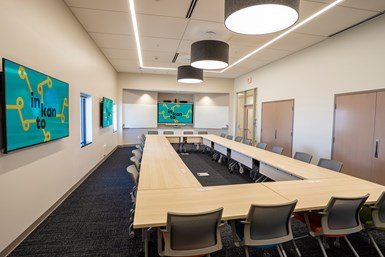Armor Group Begins 3D Production in U.S.
Company starts 3D materials production in U.S. through its Kimya subsidiary, located in Hebron, Kentucky.
Share
Read Next

Part of Armor USA’s expanded facility.
French manufacturer Armor Group and its brand Kimya are expanding into the North American market for 3D materials production through its existing subsidiary, Armor USA, located in Hebron, Kentucky, just outside Cincinnati.
According to the company, Armor Group has had a positive start to its additive manufacturing business in France and the whole of Europe, with expertise in high-performance 3D filaments.
In 2018, Armor Group launched the design and production of 3D materials for industrial and technology companies through Kimya, offering a full, 360-degree solution for additive manufacturing. Research and design of customized materials take place at the Kimya Lab. The production of these custom and added-value 3D materials occurs at Kimya Materials, while at the Kimya Factory, the Kimya team utilizes material know-how and additive processes in the production of finished parts.
Armor first expanded into the U.S. in 1991 by starting its first subsidiary in order to develop its Thermal Transfer Ribbons activity. From an initial space of 11,000 square feet, Armor USA has acquired its entire current building of 81,000 square feet and, in 2020, recently expanded into another 30,000 square feet, creating 50% more space for new technical laboratories, a customer experience center, a training center and the space for the Kimya offering.
“This is the first time that our transformation process of semi-finished products into 3D filaments has set foot outside of France,” says Pierre-Antoine Pluvinage, business development director of Kimya - additive manufacturing by Armor. “The United States is the world’s largest market for additive manufacturing and, since Armor Group already has facilities there, it seems only natural for us to start production there.”
Related Content
-
At General Atomics, Do Unmanned Aerial Systems Reveal the Future of Aircraft Manufacturing?
The maker of the Predator and SkyGuardian remote aircraft can implement additive manufacturing more rapidly and widely than the makers of other types of planes. The role of 3D printing in current and future UAS components hints at how far AM can go to save cost and time in aircraft production and design.
-
Beehive Industries Is Going Big on Small-Scale Engines Made Through Additive Manufacturing
Backed by decades of experience in both aviation and additive, the company is now laser-focused on a single goal: developing, proving and scaling production of engines providing 5,000 lbs of thrust or less.
-
How Machining Makes AM Successful for Innovative 3D Manufacturing
Connections between metal 3D printing and CNC machining serve the Indiana manufacturer in many ways. One connection is customer conversations that resemble a machining job shop. Here is a look at a small company that has advanced quickly to become a thriving additive manufacturing part producer.













